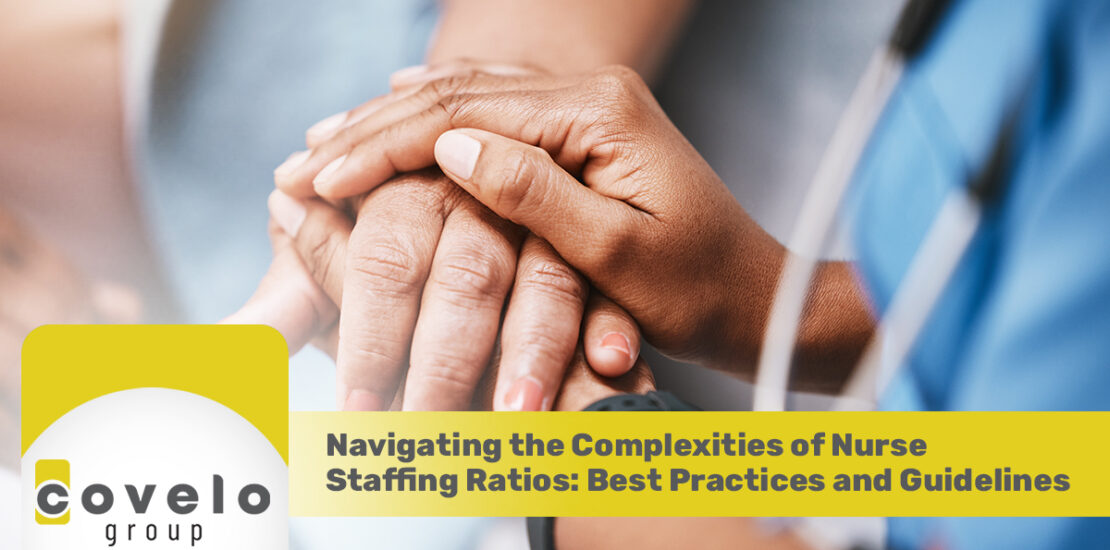- July 5, 2023
- Posted by: Covelo Group
- Categories: Clients In Healthcare, ZOE Feed

Safe staffing ratios in nursing are a big topic and are a primary contributor to nursing burnout. If a nurse is stretched too thin, it can have negative consequences for both nurse and patient. Optimal staffing to ensure positive patient outcomes is crucial. It improves patient safety and communication, decreases burnout and there is less turnover.
Let’s Examine Which States Have Laws for Nurse-to-Patient Ratios and Consider What Your Facility Can Do to Create Safe Staffing Plans:
Safe Nurse Staffing Ratios
As we discuss best practices for nurse staffing ratios, it helps to know what nursing staffing ratios are considered safe. The American Nurses Association (ANA) has resources to help guide your facility with nurse staffing. The ANA recommends the following ratios:
- Medical/Surgical: 1:4
- Emergency Room: 1:3
- Intensive Care: 1:1
- Psychiatric: 1:4
- Rehabilitation: 1:4
- Labor and Delivery: 1:2
- Pediatrics: 1:3
State Ratios
California is the lone state in the country with a minimum nurse-to-patient ratio specific to each hospital. Massachusetts has mandated a 1:1 nurse-to-patient ratio for all intensive care units. Connecticut, Minnesota, Nevada, Ohio, Oregon, Rhode Island, Texas, and Washington must use staffing committees, with 50% of the members being clinical nurses. Illinois, New Jersey, New York, Rhode Island, Vermont, and Washington must produce reports to the public upon state request.
Staffing Suggestions
You do not need to wait until your state creates mandates or laws around staffing ratios. You can be proactive and make safe staffing plans. Start by asking for and accepting input from your direct-care nurses. Remember that these nurses want to be valued and heard. Their information can give you valuable insight into patient safety as you create a staffing plan.
Next, you will want to create a staffing plan formally. Use the plan to match clinicians with patients who benefit best from the nurse’s skills. Make it specific for each unit and standardize the level of care. You must be flexible and consider patient understanding, nursing staff level of expertise, and patient admission numbers.
For patient intake fluctuations and nurses calling out, use per diem staff. Utilizing your PRN staff is a resource that can help you meet patient fluctuations and staffing issues and is a reasonable step.
Finally, reevaluate overtime policies. If your nursing staff is feeling overwhelmed, and there is a good chance they are, use PRN staff instead of mandatory overtime to relieve your team without compromising the level of care.
Contact The Professionals at Covelo Today
Covelo Group is a partner that can set you up for nursing success. The professionals at Covelo are your advisers and advocates for higher pay and better benefits. Reach out to our staffing firm today to learn how we can help you.

